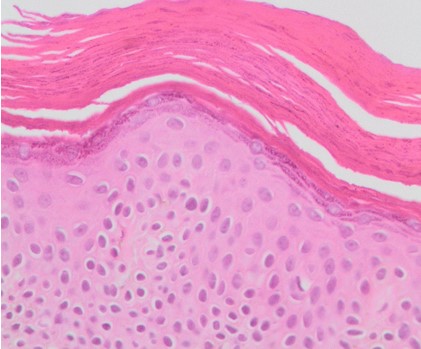Resumo
Un entendimiento preciso de la anatomía cerebral es fundamental en la práctica y entrenamiento de los neurocirujanos. El estudio anatómico en cadáveres se ha convertido en uno de los métodos más útiles dentro de este campo debido a que permite el estudio de variaciones anatómicas poblaciones y el entrenamiento de habilidades quirúrgicas (técnica, profundidad, visoespacialidad) por medio de las disecciones para el mejor entendimiento de la anatomía humana y del sistema nervioso central. Por ello, las técnicas de preservación y coloración del tejido cerebral surgen como una alternativa de educación morfológica, entrenamiento y aprendizaje de los residentes de neurocirugía. Esta revisión pretende describir estas técnicas y los diferentes métodos de coloración vascular cerebral. Con esto, buscamos facilitar la creación de laboratorios de microcirugía y proponer nuevas alternativas que pueden aplicarse en la educación de estudiantes y residentes de neurocirugía.
2. Sanan A, Aziz K, Janjua R, Loveren H, Keller J. Colored Silicone Injection for Use in Neurosurgical Dissections : Anatomic Technical Note. 1999;45(5).
3. Benet A, Rincon-Torroella J, Lawton MT, Gonzalez Sánchez J. Novel embalming solution for neurosurgical simulation in cadavers. 2014;120(May):1229–37.
4. Alvernia J, Pradilla G, Mertens P, Tamargo R. Surgical Anatomy and Technique Latex Injection of Cadaver Heads : Technical Note. 2010;67(December):362–7.
5. Mehra S, Houdhary RC, Uli AT. Dry Preservation of Cadaveric Hearts : An Innovative Trial. 2003;36:34–6.
6. Pineda EP, Alfonso J, Guerra B, Luque RM. Revisión: La plastinación como técnica de preservación de material biológico para docencia e investigación en anatomía. 2017;9(1):55–62.
7. Slater D. Health Hazards of formaldehyde. Vol. 1, Lancet (London, England). England; 1981. p. 1099.
8. Bhandari K, Acharya S, Srivastava AK, Kumari R, Nimmagada K. Plastination: a new model of teaching anatomy. 2016;4(3):3–6.
9. Breve U, Plastinaci D. A Brief Review on the History , Methods and Applications of Plastination. 2010;28(4):1075–9.
10. Elnady FA. The Elnady Technique : An Innovative , New Method for Tissue Preservation. 2016;33(3):237–42.
11. Ravi SB, Bhat VM. Plastination : A novel , innovative teaching adjunct in oral pathology. 2018;15(2):133–7.
12. Bickley HC, Conner RS, Walker AN, Jackson RL. Harmon C. Bickley, Robert S.Conner Anna N. Walker and R. Lamar Jackson. :30–9.
13. Venegas C, Dalmau E, Trujillo C, Díaz C. La técnica de plastinación por corrosión : realidad posible. 2013;
14. Cook P, Dawson B. Plastination methods. 1995;
15. Rodriguez F, Algarilla D. Diafanización : Técnica Modificada por Solución Rojo.
16. Díaz M, Suárez C, Rodríguez S, Valbuena A, Cruz C, Barahona S, et al. Artículo de reflexión: comparación de técnicas de conservación morfológica y su posible aplicación para la enseñanza de la anatomía. 2014;6(3).
17. Triviño Casado, A.; Ramírez Sebastián, J.M.; García Sánchez J. Método combinado de diafanización y relleno vascular para el estudio de la vascularización del globo ocular. Arch Soc Esp Oftalmol. 1980;
18. Scala G. Microvasculature of the Cerebral Cortex : A Vascular Corrosion Cast and Immunocytochemical Study. 2014;263(September 2013):257–63.
19. Limpastan K, Vaniyapong T, Watcharasaksilp W, Norasetthada T. Silicone injected cadaveric head for neurosurgical dissection : Prepared from defrosted cadaver. 2013;8(2):10–2.
20. Inoue T, Kobayashi S, Sugita K. Dye Injection Method for the Demonstration of Territories Supplied by Individual Perforating Arteries of the Posterior Communicating Artery in the Dog. :684–7.
21. Riepertinger A. E 20 color-injection. 1989;8–12.
22. Kaya AH, Sam B, Celik F. A quick-solidifying , coloured silicone mixture for injecting into brains for autopsy : technical report. 2006;i:322–6.
23. Urgun K, Toktas ZO, Akakin A, Yilmaz B, Şahin S, Kiliç T. A Very Quickly Prepared , Colored Silicone Material for Injecting into Cerebral Vasculature for Anatomical Dissection : A Novel and Suitable Material for both Fresh and Non-Fresh Cadavers. 2016;1–6.
24. Shkarubo MA, Shkarubo AN, Dobrovolsky GF, Polev GA, Chernov I V, Andreev DN, et al. Making Anatomical Preparations of the Human Brain Using Colored Silicone for vascular Perfusion Staining (technical description). World Neurosurg [Internet]. 2018; Available from: https://doi.org/10.1016/j.wneu.2018.01.102
25. Blaney SP, Johnson B. Technique for reconstituting fixed cadaveric tissue. Anat Rec. 1989 Aug;224(4):550–1.
26. Krishnamurthy S, Powers SK. The use of fabric softener in neurosurgical prosections. Neurosurgery. 1995 Feb;36(2):420–4.
27. Macdonald GJ, MacGregor DB. Procedures for embalming cadavers for the dissecting laboratory. Proc Soc Exp Biol Med. 1997 Sep;215(4):363–5.
28. Goodrich JT. A millennium review of skull base surgery. Childs Nerv Syst. 2000 Nov;16(10–11):669–85.
29. Martins C. Rhoton Papers. 2016;1–14.
30. Latarjet M, Juttin P. [Use of injections of plastic substances in anatomopathological studies of the lung]. Poumon. 1952 May;8(5):459–63.
31. Latarjet M. Plastics in anatomical technique. Sem Med. 1952 Oct;28(74):10.

Este trabalho está licenciado sob uma licença Creative Commons Attribution 4.0 International License.
Copyright (c) 2021 Maria Isabel Ocampo Navia, Juan Carlos Gomez-Vega



